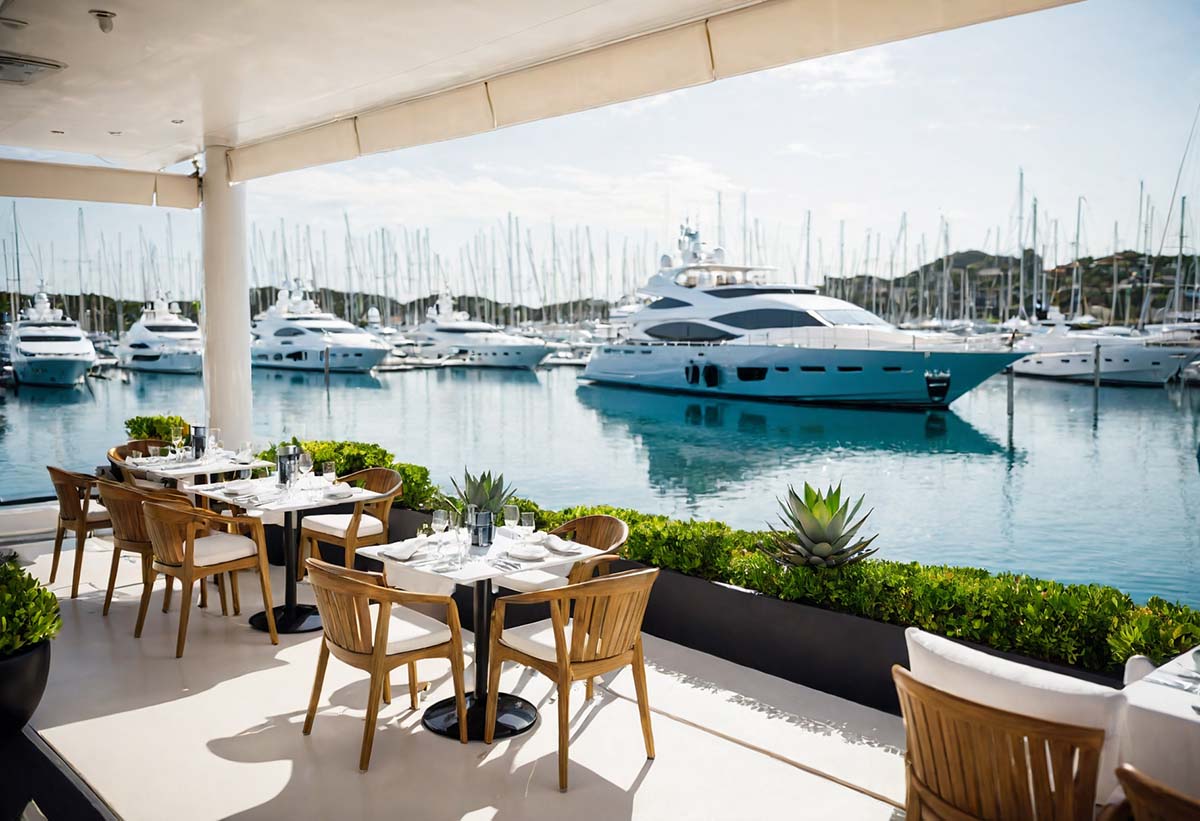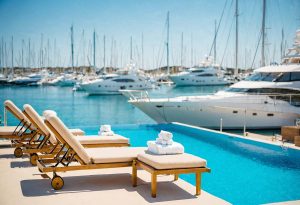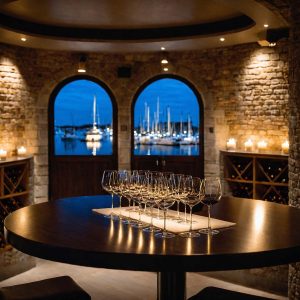
5 Trending Amenities Shaping the Future of Marina Development
Published on October 24, 2025For decades, marina development was measured by slip count, water access and protection from storms. While these fundamentals remain essential, they no longer define the customer experience on their own. Today’s boaters and the next generation of owners are looking for more. They want their marina to feel like an extension of their lifestyle: a place where service, convenience and community are just as important as safe mooring.
Across the industry, developers are reimagining what a marina can be. From automation and hospitality-driven design to sustainability and smart technology, the waterfront is becoming a stage for innovation. In fact, five trending amenities are already shaping what tomorrow’s boaters will demand.
These trends extend beyond slip counts and storm protection, redefining marinas as lifestyle-driven destinations. Developers who integrate them into new construction aren’t just adding luxuries; they’re future-proofing investments, driving lease premiums and creating hubs that attract boaters year-round.

Here are the five amenities that will define marina success in 2026 and beyond.
Trend 1: Resort-Style Social Spaces
The days of a marina being just a row of slips are over. Increasingly, operators are building resort-inspired amenities such as pools overlooking the waterfront, rooftop terraces, outdoor kitchens and clubhouses that double as event venues.
Design Consideration: Flexible indoor-outdoor spaces allow marinas to serve families during the day and host private events or live music in the evening.
ROI Impact: Social spaces create opportunities for membership tiers, food and beverage revenue and third-party event rentals.
Customer Benefit: Slip holders see the marina as a gathering place, deepening loyalty and reducing churn.
Trend 2: Tech-Enabled Convenience
Boaters expect technology to be seamless. What used to feel cutting edge—texting a dockmaster or reserving a slip online—has become the bare minimum. Looking forward:
On-demand boat retrieval: Mobile apps will let boaters request launch with real-time status updates, whether from traditional valet-style operations or next-generation automated dry stack systems that maximize efficiency and reliability.
Integrated platforms: Consolidated apps will combine billing, fuel purchases, guest slip reservations, and concierge services in one place.
Predictive operations: Smart sensors and artificial intelligence can provide preventative maintenance alerts, reducing downtime for both boaters and operators.
This level of convenience mirrors what customers experience in hospitality and retail industries that now define the service benchmark for marinas.
Trend 3: Wellness and Sustainability
A new generation of boaters is shaping expectations through eco-conscious and wellness-driven living.

Sustainability: EV charging stations for vehicles and vessels, advanced shore power, water-filtration systems and stormwater management not only protect the environment but also resonate with environmentally minded investors and customers.
Wellness: Spa-quality showers, yoga decks and on-site fitness facilities cater to owners who view their marina as a lifestyle hub. Healthy dining options and farm-to-dock partnerships reinforce this wellness ethos.
Regulatory Advantage: Incorporating green infrastructure early can also streamline approvals, as agencies increasingly prioritize projects with clear environmental benefits.
Trend 4: Retail and Mixed-Use Integration
Waterfront real estate is too valuable to serve only boat owners. Developers are finding that integrating retail and hospitality diversifies revenue while creating vibrant, walkable destinations.
Examples: Boutique shops, marine outfitters, rooftop dining, and ground-level markets that draw both boaters and the broader community.
Design Approach: Ground-floor activation with retail and dining, with upper levels dedicated to dry stack or mixed-use storage solutions.
Outcome: The marina becomes more than a service; it’s a community anchor that drives year-round traffic and creates resilience against seasonal slowdowns.
Trend 5: Exclusive, Member-Only Perks
With demand outpacing supply in many coastal markets, exclusivity is emerging as a powerful differentiator.

Concierge services: From scheduling maintenance to stocking provisions, concierge-level support elevates the customer experience.
Private spaces: Members-only lounges, wine cellars and curated gear storage give boaters tangible reasons to stay loyal.
Experiential offerings: VIP excursions, travel planning and partnerships with nearby resorts create a brand identity that extends beyond the dock.
Capacity solutions: Advanced storage systems also enable exclusivity by maximizing capacity within fixed footprints, ensuring members feel they are part of a premium, limited-access community.
These perks position marinas as lifestyle brands rather than simple service providers.
Looking Ahead: Designing with Trends in Mind
Integrating these amenities isn’t as simple as checking boxes. They must be built into the design process from the outset, not added as afterthoughts. Early planning is critical.
Permitting Implications: Rooftop pools, expanded clubhouses, or EV charging infrastructure may require additional regulatory approvals. Aligning amenities with permitting earlier reduces risk.
Operational Efficiency: Automated retrieval systems free up valuable footprint and staff time, enabling operators to redirect resources toward higher-value amenities and customer experiences.
Financial Models: Developers must balance upfront investment with long-term ROI, considering how amenities translate into lease premiums, membership revenue, or diversified income streams.
Conclusion
These five trends highlight a clear shift: by 2026, marinas will be judged as much by lifestyle amenities as by infrastructure. Developers who anticipate and integrate them early won’t just stay competitive; they’ll help shape the future of marina development.
Tomorrow’s marinas aren’t just places to keep boats—they’re places to live life better on the water.
David Brown is the president and founder of GCM Contracting Solutions, a multi-generational design-build contractor specializing in waterfront, marina, tilt-wall and dry stack storage projects. He also leads ASAR, GCM’s automated storage and retrieval division. He can be reached at dbrown@gcmcontracting.com.
| Categories | |
| Tags |





